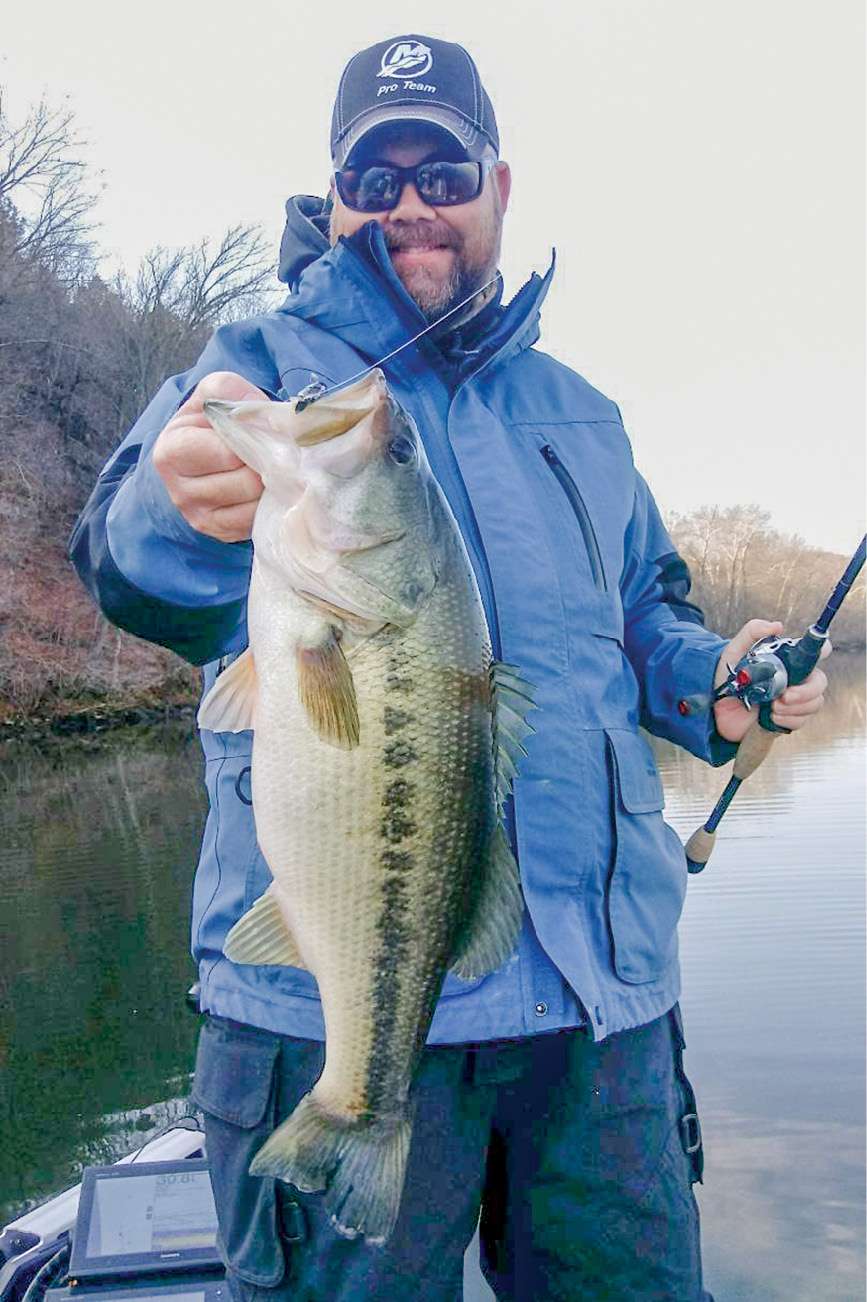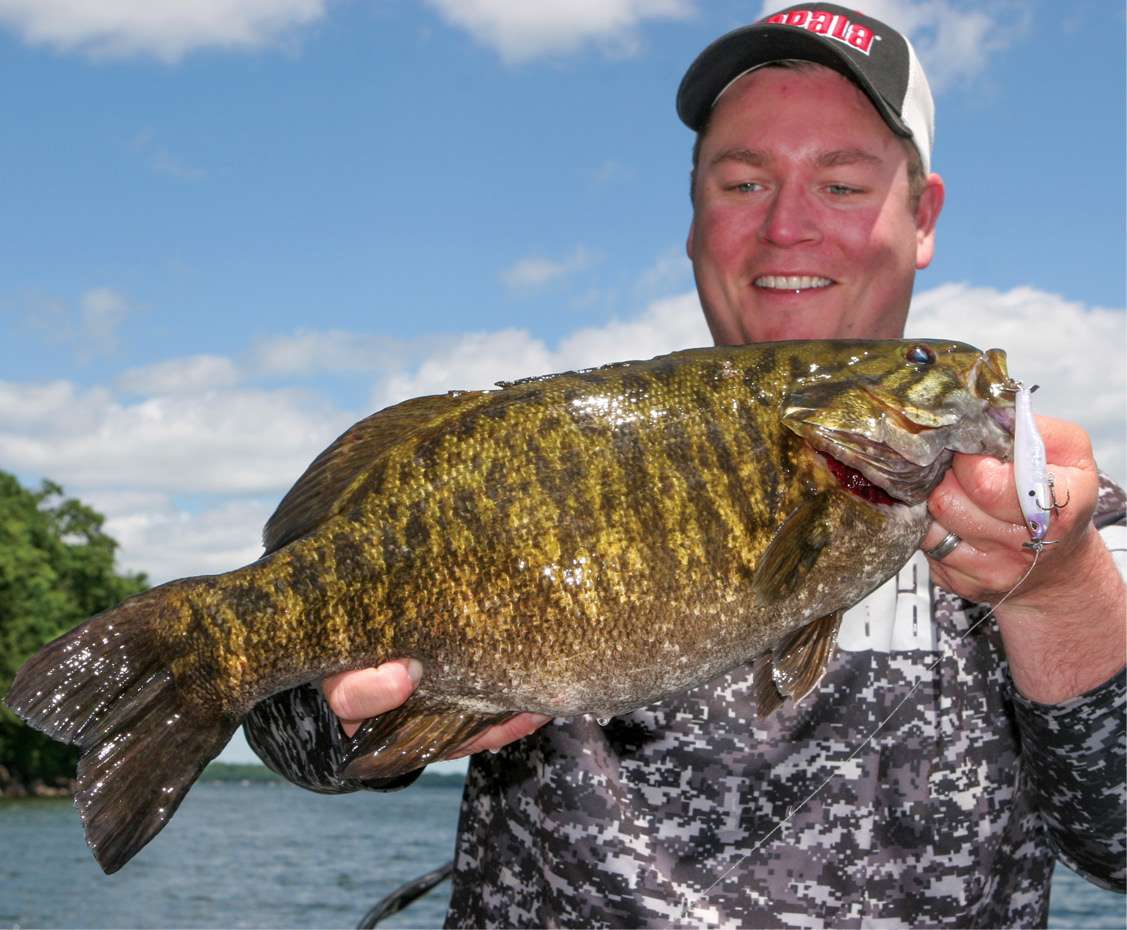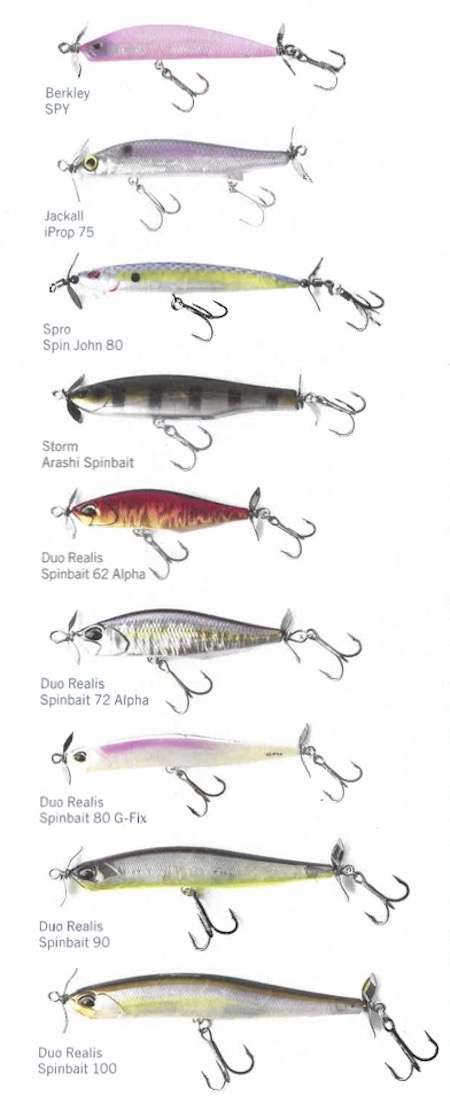
Like a ninja warrior, the technique of spybaiting has silently infiltrated the ranks of Bassmaster pros. As with previous lure innovations, anglers would prefer to garner some high finishes before their secret techniques become widely understood. Thus the veil of secrecy and rumor that has surrounded spybaits. Moreover, even the most accomplished pros admit that getting the most from these lures demands a steep learning curve.
Spybait beginnings
I first heard about spybaiting in 2013 from David Swendseid of Oregon, an avid angler who has worked at Duo Realis as a manager of research and development, as well as with the marketing department. He’d been aware of the technique from his Japanese contacts and began testing Japanese models in Western waters, trying to find the ideal action, size and weight for these unique lures. “I wanted Duo to develop one that would work great for American bass fishing, which varies a lot from Japanese techniques,” Swendseid says. “Over there, the trend began when companies started putting propellers on all sorts of lures. Japanese designers are very creative and imaginative. Some looked like eggs with an eggbeater built in. But they also put props on jerkbaits, which ultimately led to spybaits. We built our line of spinbaits to catch bass in American waters. Along the way, I introduced lots of pros to this technique. Professional anglers are eager to learn about any technique that promises to put more bass in their boat in some situation. Then they run with it, so word slowly spread.”
Spybait strategies
As Swendseid suggests, anglers found dramatic but sporadic success spybaiting. When it worked, it was dangerous, but bass sometimes ignored them. Among the early practitioners was 2017 Bassmaster Elite Series Angler of the Year Brandon Palaniuk. “Spybaits are ideal when bass are feeding up, chasing baitfish,” he says. “If they’re bottom-oriented, looking for crawfish or gobies, forget it. I’ve had success [with] largemouth, but they’re particularly effective for smallmouth on the big, clear lakes of the North: Oneida, Champlain, Cayuga, Erie and the St. Lawrence River, for example.” He used them to finish high in August tournaments on New York’s Cayuga and Champlain. “At Cayuga, I found largemouth and smallmouth feeding on baitfish offshore, but they wouldn’t hit jerkbaits or soft plastics. They’d follow my drop-shot rig down but not bite. I finally tried a spybait, and it was on! A year or two later, I found smallmouth chasing yellow perch off grasslines at Champlain. I worked the green gill Storm Spinbait parallel to the edge. It looks just like a perch and they couldn’t resist it.
“Look for areas where bass feed from ambush spots, such as deep, rocky points, bluff banks and humps. Deep grasslines can be good, too. Bass will swim up more than 10 feet to hit spybaits, so the clearer the water, the better. I rely on my Humminbird MEGA 360 Imaging to fish spots holding fish. I used the Duo baits, then helped develop Storm’s Arashi Spinbait.
“You often see fish come up and follow spybaits. It can be tough to get them to bite, especially near the boat. Long casts help you get the lure out and away, where bass are more likely to strike, especially if you cast past a key structure and retrieve it toward it. It’s important to know the drop speed of your lure so you can accurately count it down to depth. Then the retrieve is real slow. That’s one of the hardest things to teach yourself.”
Spybait secrets
Few lures are so dependent for success on proper selection of tackle as spybaits. I know anglers who have tried them but not caught fish and put them down. Swendseid emphasizes correct choice of rod, reel and line, and is a stickler for the thin fluorocarbon. “I’ve introduced many guys to spybaits and showed them how important light line is,” he says. “The learning curve is shortened if you start with the right gear. I rely on 4- to 6-pound Seaguar Tatsu on a shallow-spool reel. With less than 100 yards of line in the spool, fluorocarbon handles much easier.” His favorite is a Japanese reel not available in the U.S., but he says thin braid and a 30- to 35-foot fluorocarbon leader works well on a standard spinning reel. He favors a 7 1/2-foot Daiwa Steez rod rated medium-light power.
Palaniuk shares his preferences, going with 6-pound Tatsu on an Alpha Angler 7-foot, 2-inch Spybait rod he helped design. “It’s rated medium,” he says, “but fishes more like a medium-light with parabolic action. Bass often are barely hooked on spybaits; they rarely inhale them. A softer rod helps keep them hooked as you play them very delicately.”

Veteran Missouri pro Brian Snowden has a somewhat different take on tackle, however. “I prefer the control that a baitcaster provides,” he says. “I match a 7-foot, 2-inch Bass Pro Shops Legend Glass rod with a Johnny Morris Signature reel and 8-pound fluorocarbon. I can easily cast the little Duo Spinbait 80, and with a slower gear ratio, you can keep it down in the water column. I’ve had great success with spybaits in our Ozark reservoirs, which aren’t clear like the Great Lakes but plenty clear enough for this technique to work. I start using spybaits in the prespawn, and they work extremely well after the spawn, too. They’re deadly over mid-depth structure where you often find spotted bass and smallmouth, as well as largemouth. They eat this bait even in calm and sunny conditions. Wind doesn’t hurt the bite, either, though it makes fishing them a little tougher. I use them in place of a Fluke, switching to the faster-sinking Alpha 72 in deeper areas, such as over the deep, standing timber we have here. I fish it down to 25 feet in summer. To keep it down, I feed line after the cast, so it falls level, not swinging back toward the boat.” Snowden is a self-professed “Garmin guy” and takes advantage of LiveScope’s fish-finding ability, saying that sonar and a spybait can add 10 to 15 bass to your daily catch.
Bassmaster veteran Jay Yelas of Oregon has found spybaits deadly in winter, as well. “In highland reservoirs, bass suspend offshore in cold conditions and can be real finicky in clear water,” Yelas notes. “Local experts catch them with float-and-fly rigs, but a spybait fishes horizontally, so you can cover key areas better, working parallel to bluffs and deep points. Another situation is during a mayfly hatch, when bass are superactive but turn down nearly everything you throw. The subtle motion and natural look of a spybait can be the best option. If you’re new to spybaits, I recommend pulling it alongside the boat to observe its action at different retrieve speeds. You know it’s slow enough when the lure has that subtle roll. You can’t get in a hurry with them.”
An eye on the spies
Duo Realis started the spybait story in 2012 with the release of the Spinbait 80, followed closely by the Spinbait 80 G-Fix — very similar but with added weight for casting, a more hydrodynamic body and slightly smaller propellers. The slightly larger Spinbait 90 followed two years later, then the shorter and heavier Spinbait 72 Alpha for deeper running and long casts. Next in production was the larger Spinbait 100 and the compact 62 Alpha. If that’s not enough to get your head spinning, Swendseid assures us that more models are in the works.
As we know in the lure business, imitation is the sincerest form of flattery. Companies have been eager to offer competitive models, though the process hasn’t been easy. Just as the learning curve for fishing these lures is steep, so is the process for producing effective models. They must be delicately balanced to exhibit the delicate wobbling action that can be so deadly. Almost too subtle to see, they shimmy back and forth, not only on the fall but as they’re slowly retrieved.
Several Japanese companies entered the market, as Lucky Craft offered the Screw Prop (later renamed Screw Pointer), basically a Slender Pointer with props fore and aft. Four sizes measure 3 1/4 inches to 4 5/16 inches and weigh 7/16 to 5/8 ounce. Its latest is the Screw Pointer 85, a little heavier for its length to fall faster and cast farther. Jackall released the iProp 75S, a small (3-inch, 3/10-ounce) lure in the tradition of the company’s I-Motion concept, based on the belief that sometimes the most effective action is no action. Megabass’ X-Plose is equipped with larger props, a three-bladed one on the nose and a double prop on the back, both with cutouts to increase disturbance. Anglers have found this one to be a crossover bait that excels for fishing shallow and running like a wake bait.

In 2016, Storm entered the spy scene with the Arashi Spinbait, measuring 3 1/8 inches and 1/3 ounce. Like the original, it comes in a variety of natural, translucent colors that mimic baitfish. Palaniuk, a Storm pro staffer, had a hand in its development. “They have a three-bladed prop on the nose,” he says, “with a two-bladed one on the tail. They’re set up to counter-rotate, keeping the lure tracking straight. I feel the props create underwater vortices that bass can feel and use to find and strike prey.”
The latest model, released in 2020, is Berkley’s SPY, a 2.75-incher, available in 1/4- and 1/3-ounce versions to achieve different fall rates. Lure designer Dan Spengler worked on it for nearly two years, testing shapes, propeller configurations and weighting options. “The minnow shape worked much better than any shad styles,” Spengler says. “The Spy has a flatter belly than other spybaits, so it sits head-up at a 45-degree angle, with a little tail wiggle that’s been very effective. We determined that they work best at about 1 mph, a superslow retrieve. The heavier one sinks at almost a foot per second, the lighter at about half a foot per second. Use the light one in shallower areas to stay up in the water column. A faster fall is better for deep structure or open water where bass suspend 6 to 15 feet down.”
Spybaits are still on the leading edge of niche techniques — tactics that don’t work everywhere but can be deadly in the right situation when fished with skillful hands. It’s far from a run-and-gun approach, but it is something that can lift you above the pack when clear water and suspended bass are in play.
Choosing the perfect spy
Although Duo Realis has the largest assortment of spybaits, anglers now have many options. These range in length, weight, width and prop configurations.

Originally appeared in Bassmaster Magazine 2021.




